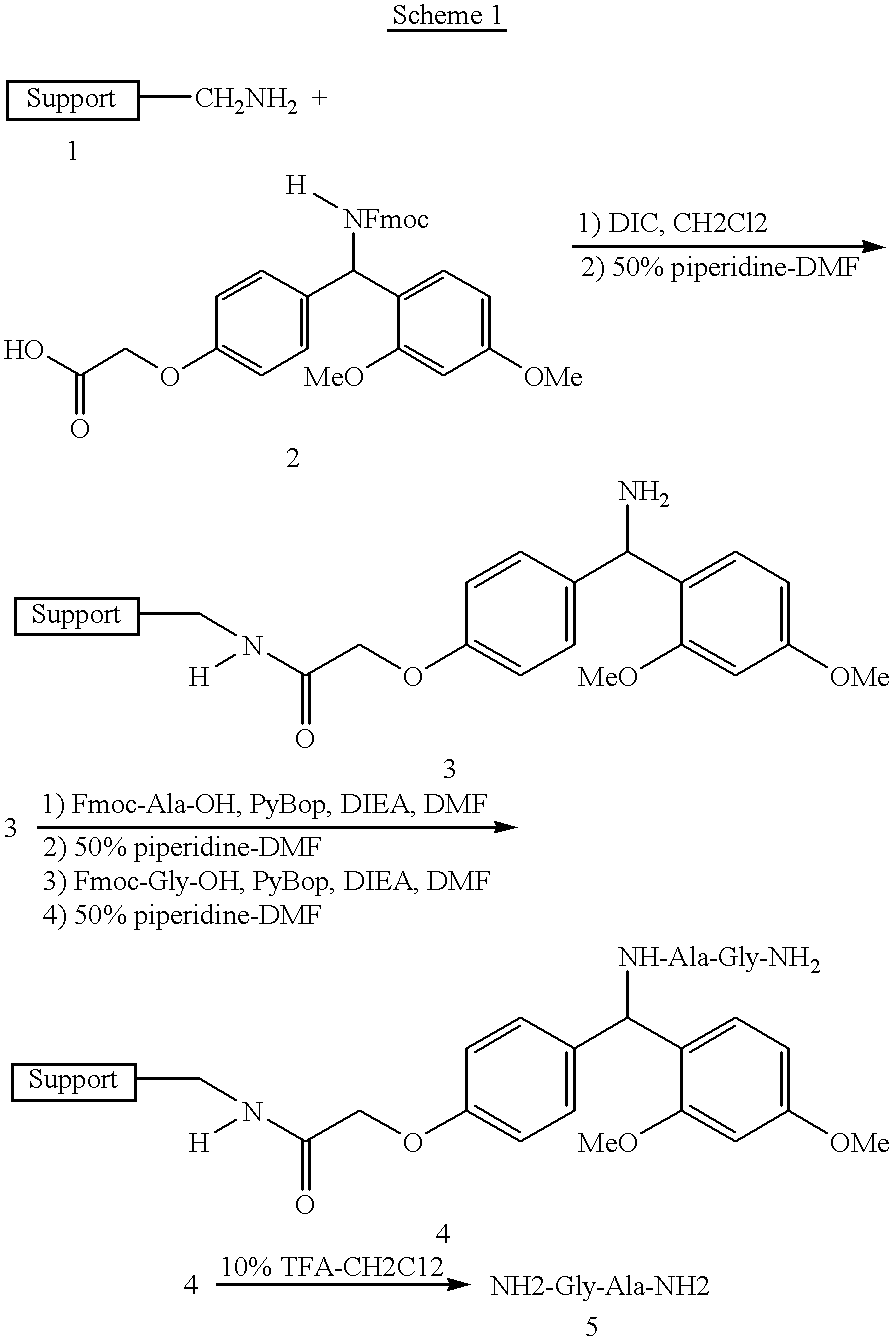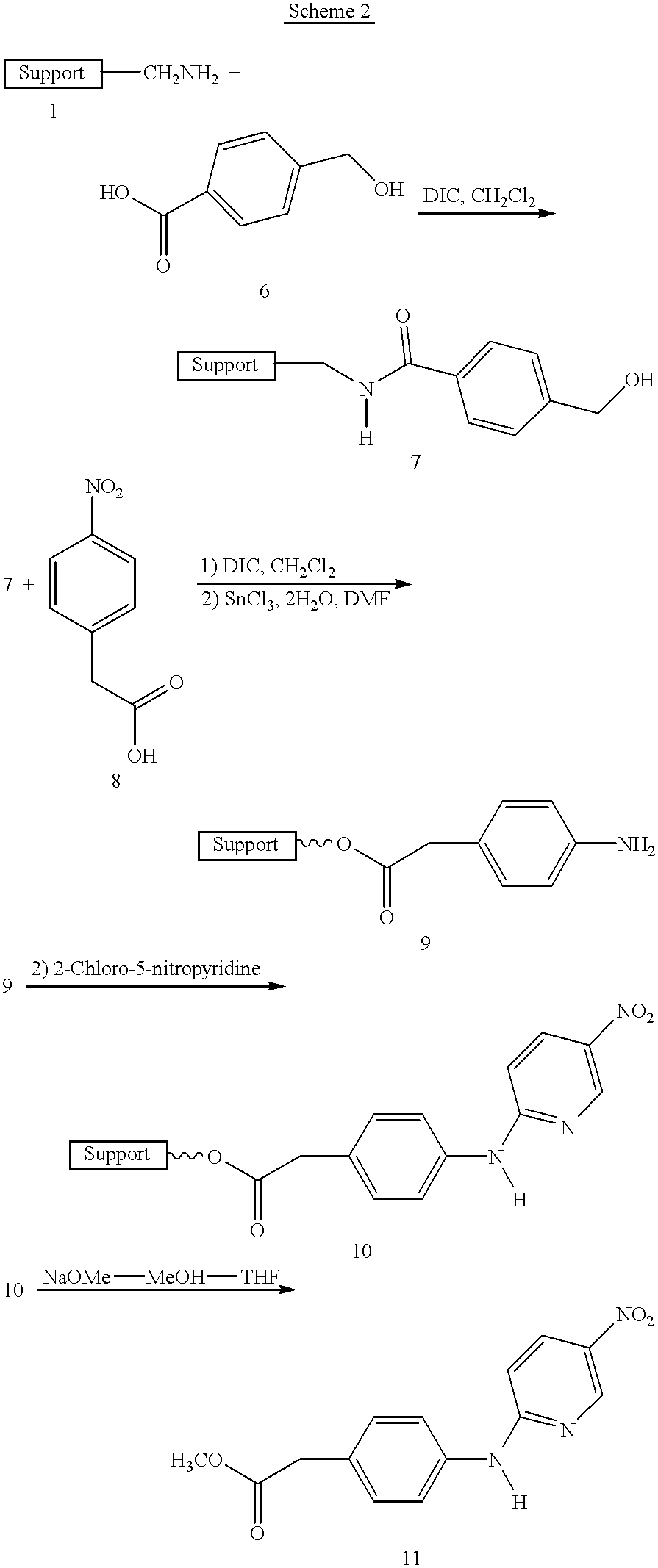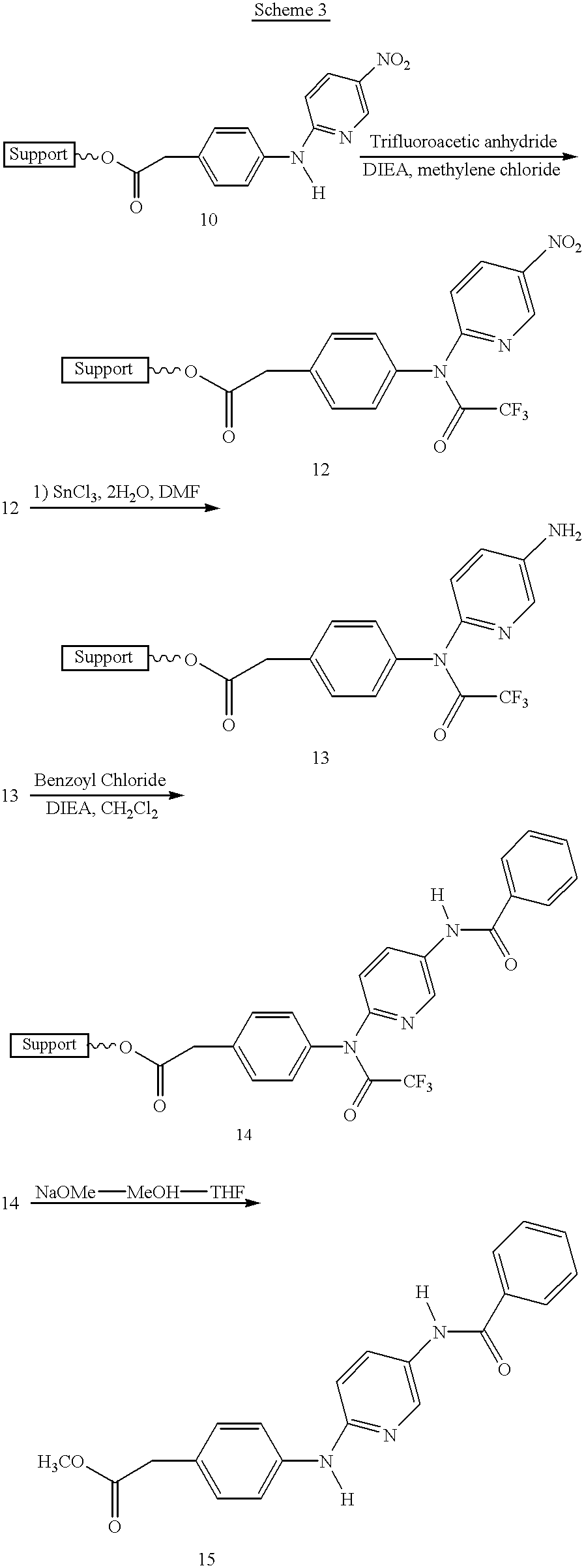Reaction plenum with magnetic separation and/or ultrasonic agitation
- Summary
- Abstract
- Description
- Claims
- Application Information
AI Technical Summary
Benefits of technology
Problems solved by technology
Method used
Image
Examples
example 2
Cleavage of Gly-Ala Off Magnetic Composite Particles (Scheme 1)
To dried resin 4 (Scheme 1) is added 3 mL of a 10% trifluoroacetic acid (TFA) in methylene chloride and the mixture is sonicated on low power for 20 minutes. The particles are magnetically separated and the liquid is siphoned off using the Tecan robot. To the particles is added another 3 mL of 10% TFA-CH.sub.2 Cl.sub.2 solution and the mixture is sonicated on low power for a total of 20 minutes. The particles are again magnetically separated. The liquid is aspirated off and combined with the previous acid wash, and the volatile components are removed under reduced pressure to give an oil. The oil is precipitated from diethyl ether to give the dipeptide 5 (Scheme 1) as the trifluoroacetic acid salt. ##STR2##
example 3
Automated Stepwise Synthesis of Resin Bound 4-Aminophenyl Acetate (9) (Scheme 2)
a) Coupling of Linker (6). To one of the flasks mounted in the reaction plate is added 25 mg (0.017 mmole) of aminomethyl magnetic composite particles 1 (obtained from Polymer Laboratories, Church Stretton, UK, which are the ones disclosed in pending application Ser. No. 08 / 585,905, filed Jan. 16, 1996). Using a commercially available one arm x-y-z Tecan 505 liquid handling robot (Research Triangle Park, N.C.) a solution of 50 microliters (11.4 mmole) of DIEA dissolved in 1.5 mL of methylene chloride is added by needle syringe. The water bath temperature is set at 25.degree. C. using a commercially available temperature controlled (-20.degree.C. to 150.degree. C.) water circulating bath (model 1140A, VWR Scientific, Plainfield, N.J.) which is connected at the entrance 26 and exit 27 ports of the reaction plenum (FIG. 5). The mixture is then sonicated using the Blackstone Ultrasonics brand immersible soni...
example 4
Comparison of Resin Washing With and Without the use of Sonication
This example is presented to demonstrate the effectiveness of sonication for resin washing of impurities in contrast to standard filtration washing. Resin bound aminophenyl acetate (9, Scheme 2) was synthesized as in Example 3 except that the unreacted SnCl.phi.2H.sub.2 O was washed using standard filtration washing following the protocol: 5.times.DMF, 4.times.MeOH, 3.times.CH.sub.2 CI.sub.2 and 3.times.MeOH in that order to give Sample 9-A. Each wash involved shaking the resin mixture for 30 seconds before filtering. The level of tin in Sample 9-A was then measured using elemental analysis to be 1.71%. A portion of Sample 9-A was then stirred for 24 hours in dimethylformamide and then filtered and washed with methanol to give Sample 9-B. The level of tin in Sample 9-B was then measured using elemental analysis to be 0.36%. Another portion of Sample 9-A was sonicated (25 kHz or 40 kHz) on low power for 5 hours in dime...
PUM
| Property | Measurement | Unit |
|---|---|---|
| Power | aaaaa | aaaaa |
| Frequency | aaaaa | aaaaa |
| Frequency | aaaaa | aaaaa |
Abstract
Description
Claims
Application Information
 Login to View More
Login to View More - R&D
- Intellectual Property
- Life Sciences
- Materials
- Tech Scout
- Unparalleled Data Quality
- Higher Quality Content
- 60% Fewer Hallucinations
Browse by: Latest US Patents, China's latest patents, Technical Efficacy Thesaurus, Application Domain, Technology Topic, Popular Technical Reports.
© 2025 PatSnap. All rights reserved.Legal|Privacy policy|Modern Slavery Act Transparency Statement|Sitemap|About US| Contact US: help@patsnap.com



